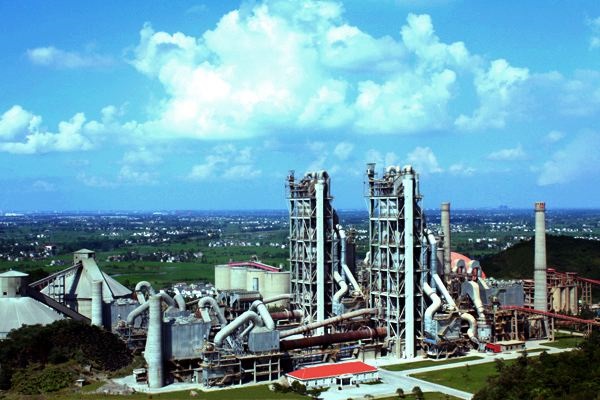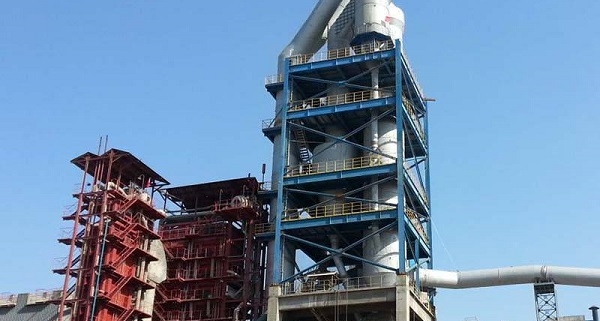To improve the thermal efficiency of the kiln, we should not only reduce the heat loss of the kiln, but also make rational use of the waste heat generated in the kiln production process. The waste heat generated in the production process of lime kiln is mainly waste gas from kiln, heat dissipation of kiln body and physical heat of lime from kiln. The sum of these waste heat accounts for 40%-50% of the heat consumption of kiln. Therefore, the rational utilization of waste heat is very important for energy saving and consumption reduction, and for improving the thermal efficiency of kilns.

1. Utilization Technology of Waste Heat from Kiln Exhaust Gas
Lime kiln exhaust temperature is high, the amount of flue gas is large, direct emissions will cause a large amount of energy waste. In practice, in order to protect downstream dust collectors and dust removal fans, it is often necessary to incorporate a large number of cold air to cool down, further increase the load of the fan, and waste a lot of electric energy. Therefore, making full use of waste heat from kiln exhaust gas is an important way to save energy and reduce consumption. At present, there are several ways to utilize waste heat from kiln exhaust gas:
(1) Preheating combustion-supporting air, fuel and biomass with exhaust gas from kiln. The high-temperature flue gas discharged from lime kiln can be preheated by heat exchange for combustion-supporting air and fuel, which can not only reduce the exhaust gas temperature, but also increase the physical sensible heat of the gas entering the kiln, increase the combustion temperature and reduce fuel consumption, thus saving energy and reducing consumption. This method has been widely used in rotary kilns and various vertical kilns. In addition, the physical sensible heat of kiln exhaust gas can be used to preheat raw meal to the greatest extent by formulating a reasonable feeding and discharging system. For example, according to the operation characteristics of double-chamber shaft kiln, reasonable setting of the feeding times of each calcination cycle can ensure that the added materials can absorb the sensible heat of the exhaust gas in the calcination cycle evenly without the phenomenon of excessive temperature of the exhaust gas.
(2) Drying materials with waste gas from kiln. The lime kiln with pulverized coal as fuel is usually equipped with a special pulverized coal preparation system, which requires a lot of heat to dry pulverized coal. On the one hand, the exhaust gas from lime kiln has large amount of flue gas, high temperature and enough heat to meet the needs of coal powder preparation, on the other hand, the oxygen content is low, which can ensure the safety of coal powder preparation system. Therefore, the use of lime kiln tail gas as a drying medium for pulverized coal has been widely used. In addition, in some factories and mines, the kiln exhaust gas is used for blast furnace slag drying and powder making, as well as for orchid charcoal drying, which has achieved comprehensive benefits of energy saving and environmental protection.
(3) Utilizing the exhaust gas from kiln to provide heating and bathing in the factory area through high-efficiency flue gas-water heat exchanger. Heat pipe type flue gas-soft water heat exchanger was used to recover waste heat from tail gas of lime rotary kiln. That is to say, a heat pipe type flue gas-soft water heat exchanger is set up on the tail pipe line between the preheater and the dust collector of rotary kiln. Soft water is used as the heat medium to heat the tail gas of rotary kiln through the heat pipe type flue gas-soft water. Most of the hot soft water after heat transfer is directly used for heating in the plant area, and a small part is used for the secondary heat transfer of soft water-bath water, which is supplied by the heat exchange station and recycled. After cooling, the exhaust gas is sent to the dust collector for purification, and then discharged into the atmosphere by the smoke exhauster. The advantages of this scheme are low requirement for flue gas temperature, high heat transfer efficiency, large heat recovery, simple system configuration, stable and reliable operation.
(4) Utilizing the waste gas from kiln to develop waste heat power generation technology. Luoyang Building Material Architectural Design and Research Institute is exploring waste heat power generation technology suitable for lime kiln, drawing on the successful experience of waste heat power generation of cement kiln. The waste gas temperature of cement kiln is relatively high, and high thermal efficiency can be obtained by using double pressure steam system. However, the waste gas temperature of lime kiln is relatively low, which belongs to pure low temperature waste heat. Therefore, the waste heat power generation of lime kiln still needs a lot of theoretical demonstration and experimental research. For large and medium-sized lime rotary kilns with exhaust gas greater than 100,000 Nm3/h, the development of waste gas waste heat power generation has entered the stage of demonstration project. The technical scheme of using waste heat to generate low parameter steam to drive kiln tail flue gas exhauster by steam turbine has also been determined.
2. Recycling and Utilization of Heat Dissipation from Lime Kiln
The heat dissipation of lime kiln body mainly dissipates into the atmosphere in the form of radiation heat, which not only wastes energy, but also affects the surrounding environment. However, due to the wide distribution of the heat dissipation surface of the lime kiln body and the large number of auxiliary equipment around the kiln body, it is difficult to recover and utilize the radiation heat of the kiln body. At present, the economy and rationality of the technical scheme are still in the stage of research and demonstration when the kiln body radiation heat is replaced by hot water for heating and bathing.
3. Utilization of waste heat of lime from kiln
The physical heat of the lime from the kiln is determined by the lime cooling system of the kiln. If the cooling effect is good, the temperature of the lime from the kiln is low, and more heat is brought into the kiln again by the cooling air to participate in combustion. Therefore, the structure of cooling belt or cooling device of lime kiln plays an important role in the utilization of waste heat of lime from kiln. By optimizing and improving the vertical cooler system of rotary kiln and improving the air distribution system of cooling air, the cooling effect of the cooler can be significantly improved and the discharge temperature can be reduced. In the shaft kiln system, taking the double-chamber shaft kiln as an example, its lime cooling device adopts central and peripheral annular cooling, and the central cooling air cap adopts tower structure to ensure uniform and smooth ventilation, so that the cooling air can better absorb the physical sensible heat of lime.



